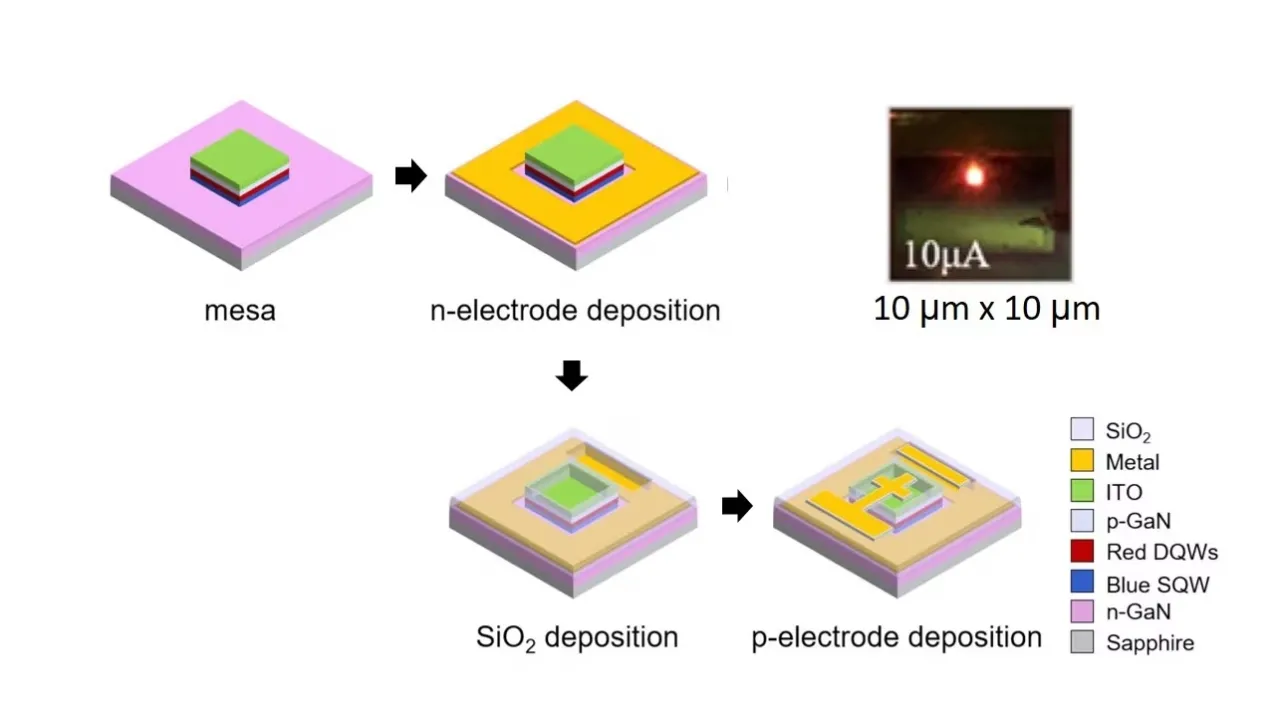
Study on the effect of size on InGaN red micro-LEDs
In this research, five sizes (100 × 100, 75 × 75, 50 × 50, 25 × 25, 10 × 10 μm2) of InGaN red micro-light emitting diode (LED) dies are produced using laser-based direct writing and maskless technology. It is observed that with increasing injection current, the smaller the size of the micro-LED, the more obvious the blue shift of the emission wavelength. When the injection current is increased from 0.1 to 1 mA, the emission wavelength of the 10 × 10 μm2 micro-LED is shifted from 617.15 to 576.87 nm. The obvious blue shift is attributed to the stress release and high current density injection.
About
[Abstract] In this research, five sizes (100 × 100, 75 × 75, 50 × 50, 25 × 25, 10 × 10 μm2) of InGaN red micro-light emitting diode (LED) dies are produced using laser-based direct writing and maskless technology. It is observed that with increasing injection current, the smaller the size of the micro-LED, the more obvious the blue shift of the emission wavelength. When the injection current is increased from 0.1 to 1 mA, the emission wavelength of the 10 × 10 μm2 micro-LED is shifted from 617.15 to 576.87 nm. The obvious blue shift is attributed to the stress release and high current density injection. Moreover, the output power density is very similar for smaller chip micro-LEDs at the same injection current density. This behavior is different from AlGaInP micro-LEDs. The sidewall defect is more easily repaired by passivation, which is similar to the behavior of blue micro-LEDs. The results indicate that the red InGaN epilayer structure provides an opportunity to realize the full color LEDs fabricated by GaNbased
LEDs.

